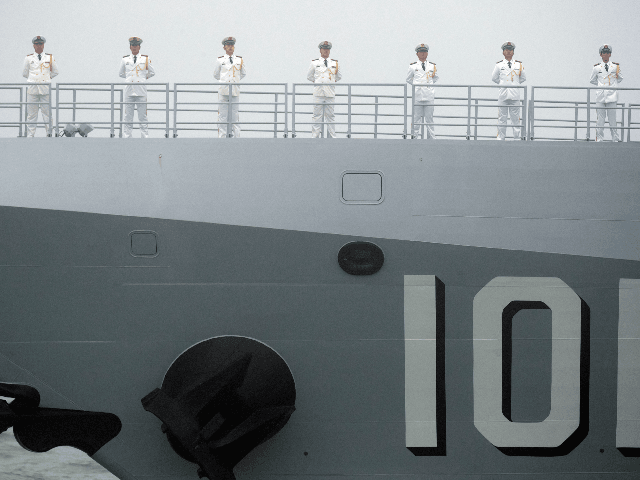The U.S. Navy disclosed on Friday that a Chinese destroyer in the western Pacific targeted an American plane flying over international waters with a laser.
The U.S. Pacific Fleet denounced China’s action as an “unsafe and unprofessional” provocation that violated both international maritime codes and agreements reached between America and China.
The U.S. Navy said the incident occurred on Monday, February 17, and involved a P-8A Poseidon patrol aircraft. The American plane was flying through international airspace about 380 miles west of Guam when a Chinese destroyer aimed a laser at it.
The laser, which was not visible to the naked eye, was captured by a sensor onboard the P-8A. Weapons-grade lasers could potentially cause serious harm to aircrew and mariners, as well as ship and aircraft systems.
The Navy said the Chinese vessel’s “unsafe and unprofessional” action violated the international Code for Unplanned Encounters at Sea, which “specifically addresses the use of lasers that could cause harm to personnel or damage to equipment,” and was also “inconsistent” with an understanding reached between the American and Chinese militaries on safe conduct during aerial and maritime encounters.
Research fellow Collin Koh of the S. Rajaratnam School of International Studies in Singapore went even further, describing the laser incident as a “serious provocation” in an interview with the South China Morning Post (SCMP):
“Use of lasers is as dangerous as manoeuvring one’s aerial or naval asset too close to another to cause the potential of collision – the lasers can pose a serious navigational hazard,” Koh said.
“While both [the Chinese and US navies] have the legitimate right to carry out their activities on the high seas out there in the western Pacific – including the use of these platforms to monitor each other – the use of lasers to endanger navigation in fact represents a serious provocation,” he said.
“The US Navy P-8A might have flown lower for closer observation, but I don’t think it went to the point of risking a collision with the [Chinese] warship.”
Conversely, Hong Kong military pundit Song Zhongping dismissed the U.S. Navy’s complaint as “unhappy” grumbling about Chinese ships coming so close to Guam, telling the SCMP it was “normal for a naval fleet and aircraft to send warnings to each other,” a point that is difficult to sustain when the Chinese ship used an invisible and dangerous laser to deliver its “warning.”
A Pacific Fleet spokeswoman told the Navy Times on Friday that the P-8A aircraft was forward-deployed from Patrol Squadron 45 in Jacksonville, Florida, to the Kadena Air Force Base in Okinawa, Japan. The aircraft returned to Kadena after the incident and is “currently undergoing a damage assessment.”
“U.S Navy aircraft routinely fly in the Philippine Sea and have done so for many years. U.S. Navy aircraft and ships will continue to fly, sail, and operate wherever international law allows,” the Navy stated.

COMMENTS
Please let us know if you're having issues with commenting.